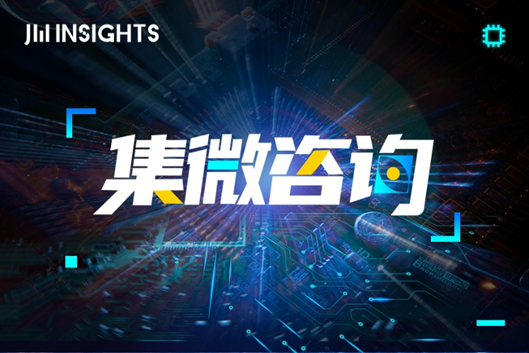

Editing by Xin Lanhua
With quick-charging for the portable device market to take off, the medium and low-voltage GaN technology has the potential to expand to more dynamic applications such as industrial data centers and electric vehicles. However, it may face challenges in manufacturing, reliability, and costs. A newly published JW Insights article advises Chinese GaN technology players to focus on consumer electronics applications, accumulate experiences first, and break into the more challenging industrial and automotive markets.
The article entitled The Long Awaited Apple's GaN Quick Charger Heralds GaN's Next Surge reviews the GaN technology and market from a Chinese perspective. The following are excerpts of the key points in the article.
GaN power devices, led by quick chargers, kicked off the market boom, which CASA Research predicts to take place between 2020 and 2025. And Yole predicts that GaN power supply market may reach a high rate of 85% in 2024. In JW Insights' view, the actual market growth is much higher than expected.
The mass production of GaN enables cost decrease and market expansion. They will replace silicon devices used for power supplies in computer, notebook motherboards, onboard chargers, and inverters, generating a lighter and smaller product experience.
About 68% of global power devices are suitable in the range of 0~900V working voltage. GaN power devices are expected to become a new force driving the market of low-voltage and low-power supplies applications, including power supplies in LED drivers, electric tools, class D audio power amplifiers, and mobile phone wireless charging.
Meanwhile, traditional cars and new energy vehicles represent new application scenarios for GaN power devices. Many companies are attempting to adopt GaN in their car products, such as traction inverters, DC/DC, onboard chargers, and LED lighting drivers..
Compared with silicon power devices, the GaN counterparts boast four times the switching speed, lower voltage, current crossover loss, up to 40% increase in power density, and lower vehicle weight and cost.
In the future, they will be substantially used in electric vehicle traction inverters (650V/900V GaN), 48V/12V DC/DC (100V GaN), onboard chargers (650V/900V GaN), and lidar (100V GaN).
With the rapid evolution of 5G, IoT, AI and autonomous driving, data centers are required to improve computing, storage, and transmission capabilities. The power of a single server cabinet also increases, resulting in more required considerations for environmental protection.
Research shows that if all the silicon-based data centers were upgraded to GaN devices, the energy waste would be reduced by 30-40%, an equivalent to 100 MWh solar energy and 125 million tons of carbon dioxide emissions. Thus GaN application is the strong option in achieving China's carbon neutrality goal.
GaN devices are used for power conversion, increasing the overall efficiency from 77% to 84%.
Industry data shows that GaN-based power supply units (PSU) used in servers and data storage products can reduce energy costs by more than $100 million for large data center operators and nearly one million metric tons of carbon dioxide emissions per year.
GaN adoption has been placed on China’s agenda for its 14th Five-Year Plan (2020-2025) because of its benefits. The annual growth rate of this market will reach 66.5% in the future.
However, to obtain the best performance and reliability, the manufacturing of GaN devices involves higher demand than that of silicon devices. China faces multiple challenges in moving forward.
The country started relatively late the research on GaN and third-generation semiconductor devices and materials, lagging behind global top players.
China also encounters technical blockades by the Western countries in GaN fields, because of geopolitical and military factors.
The epitaxial technology for GaN devices is another tough area for China, with issues of defect density, in-wafer uniformity and how to achieve industry scale.
Cost is also one of the obstacles for GaN to be accepted as mainstream applications. Many power system manufacturers, especially for price-sensitive consumer power products, still prefer to waiting for the price of GaN power devices to be closer to that of silicon devices.
The six-inch wafer is commonly used for manufacturing low-voltage GaN devices with low cost-performance ratio. It is a dilemma for many.
However, from this year, there is a gradual shift to 8-inch wafer for GaN manufacturing, improving performance while reducing the cost of low-voltage GaN devices. With more rapid growth of output, it is an encouraging sign for GaN power device price to approach that of silicon MOSFETs. They will promote wider market adoption.
On the other hand, the average price of GaN devices is continuously decreasing. Despite of the rising price of raw materials, GaN chips are still showing a downward trend. Considering system costs including peripheral heat dissipation, substrate costs, and energy consumption, GaN has become competitive.
RELATED
-
China’s power IC supplier Dongke Semiconductor and Peking University launch Joint R&D Center on Third-Generation Semiconductor
09-21 12:02 -
JW Insights: China’s fast-charging GaN power device market will reach more than $978.12 million by 2026
06-16 16:46 -
Guangzhou Institute of Technology and Atoman Semiconductor sign to build GaN Semiconductor Research Center
06-14 15:21
READ MOST

No Data Yet~







